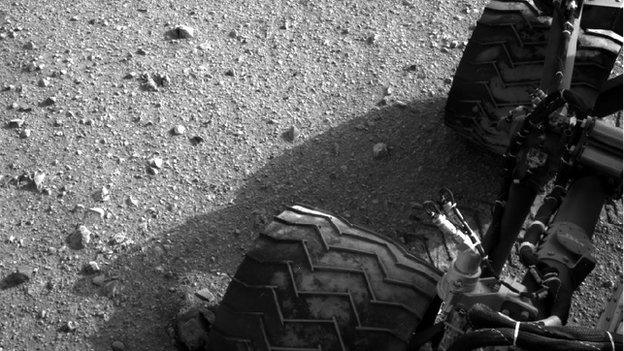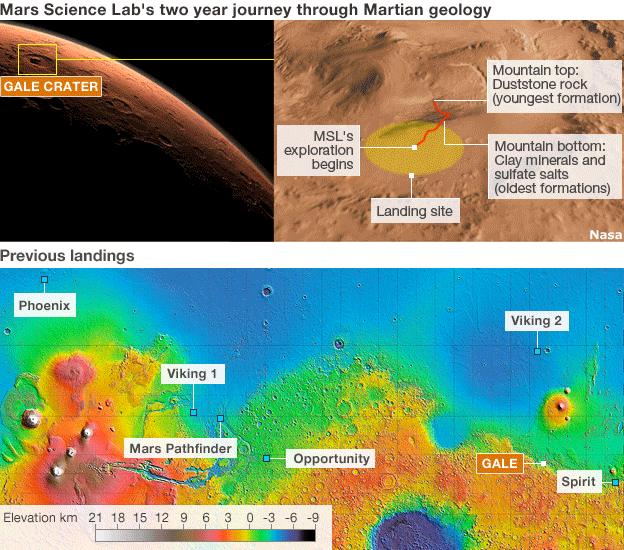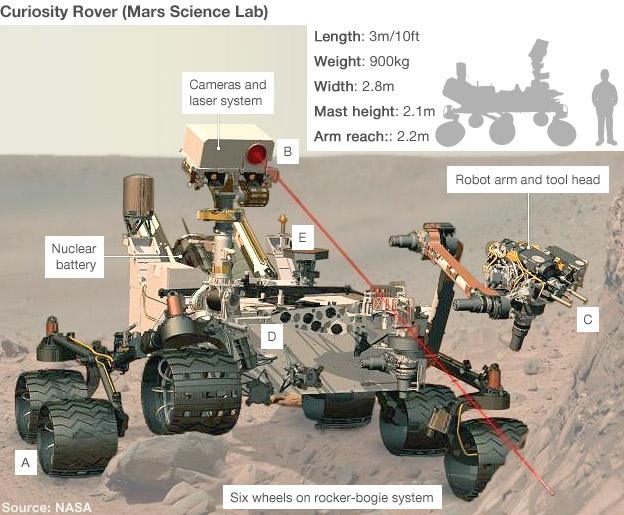Nasa rover sets off on Mars trek
- Published

The latest drive was longer than the first two combined
Nasa's Curiosity rover has set off from its Martian landing site on a trek to a destination 400m away, where scientists want to begin using the robot's drill.
The rover has carried out its third drive, heading eastward about 16m (52ft) - its longest journey so far.
Scientists want to examine a feature they have named Glenelg, where three different types of terrain intersect.
They have chosen it as a likely place to find their first rock target for drilling and analysis.
Curiosity has been built to drive at least 20km across the Martian landscape to investigate whether the planet ever had the conditions necessary for life.
"This drive really begins our journey toward the first major driving destination, Glenelg, and it's nice to see some Martian soil on our wheels," said mission manager Arthur Amador of Nasa's Jet Propulsion Laboratory (JPL) in California.
Curiosity's project scientist John Grotzinger, from the California Institute of Technology, said: "We are on our way, though Glenelg is still many weeks away.
"We plan to stop for just a day at the location we just reached, but in the next week or so we will make a longer stop."
During that stop at a still-to-be-determined location, Curiosity will test its robotic arm and the contact instruments at the end of the arm.
At the position reached on Tuesday, Curiosity's mast camera (Mastcam) will collect a set of images looking towards the mission's ultimate driving destination - the lower slopes of nearby Mount Sharp.
Scientists expect to find rocks at the base of Mount Sharp that were laid down billions of years ago in the presence of abundant water.
A mosaic of images from the current location will be used along with the Mastcam images of the mountain taken at the spot where Curiosity touched down.
This stereo pair taken about 10m (33ft) apart will provide three-dimensional information about distant features and possible driving routes.


(A) Curiosity will trundle around its landing site looking for interesting rock features to study. Its top speed is about 4cm/s
(B) This mission has 17 cameras. They will identify particular targets, and a laser will zap those rocks to probe their chemistry
(C) If the signal is significant, Curiosity will swing over instruments on its arm for close-up investigation. These include a microscope
(D) Samples drilled from rock, or scooped from the soil, can be delivered to two hi-tech analysis labs inside the rover body
(E) The results are sent to Earth through antennas on the rover deck. Return commands tell the rover where it should drive next
- Published28 August 2012
- Published22 August 2012
- Published23 August 2012
- Published21 August 2012